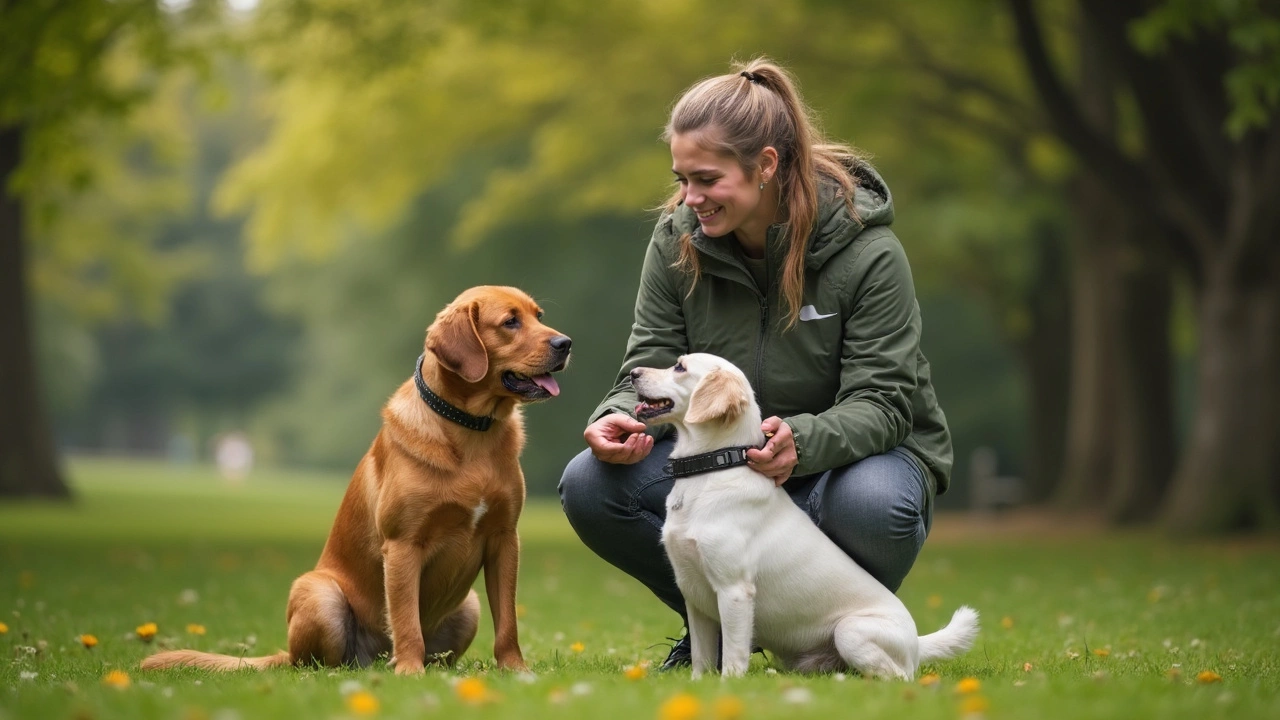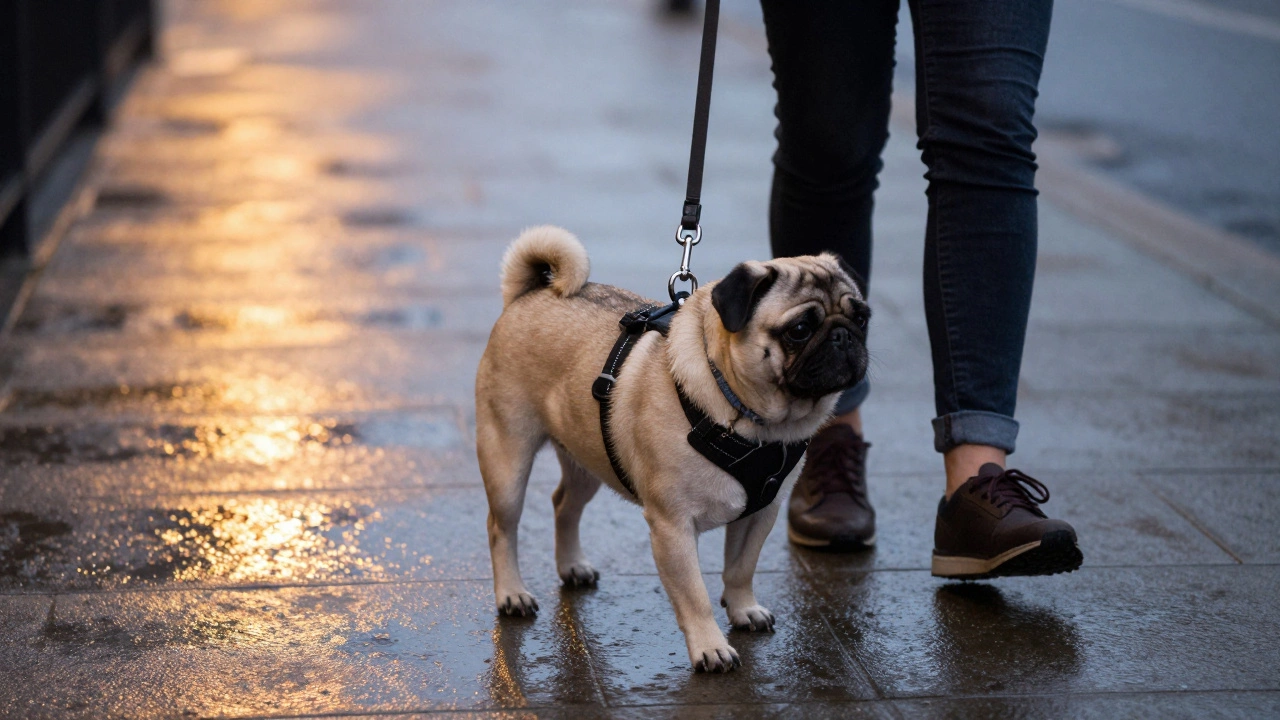If you’ve ever felt like your dog has a personal vendetta against peace and quiet, you’re definitely not alone. Barking is just what dogs do, but when it gets out of hand, it creates drama—complaints from neighbors, weird looks on walks, and a general headache at home. But what actually stops dogs from barking, especially when you throw dog collars into the mix?
The short answer: there’s no one-size-fits-all fix. Some collars work for certain dogs, some don’t. People get great results from one method while their friend swears it made things worse. That’s why it’s smart to start by understanding what really causes your dog to go off like an alarm clock every time someone walks by.
Before jumping into collars, it pays to know your options and how each works. Some collars use sound, vibration, a quick spray, or even mild static—yeah, it sounds intense, but we’ll break down how each really feels for the dog, and if science backs it up. We’ll also check out what’s actually safe, so you don’t trade one problem (barking) for another (a stressed out pet).
- Why Do Dogs Bark So Much?
- Types of Anti-Bark Collars Explained
- Do These Collars Actually Work?
- Safety and Comfort: What People Miss
- Alternatives: What Works Without a Collar
- Quick Tips for a Quieter Dog
Why Do Dogs Bark So Much?
Barking is like a dog’s version of talking. It’s totally normal and it’s actually how they get their point across—whether they’re bored, excited, nervous, or just trying to alert you about the squirrel in your backyard. What really matters is figuring out dog barking triggers before reaching for a collar or gadget.
A lot of dogs go overboard with barking when they don’t get enough mental or physical exercise. Think of it as having all this energy and nowhere to use it. Some breeds were actually created just to bark—like Beagles for hunting or Chihuahuas for alerting their owners. Age matters too: young dogs are usually mouthier because they’re learning about everything around them.
Check this out: According to a 2023 survey by the American Pet Products Association, 58% of dog owners said their dog barks too much at strangers, while 40% admitted their pup gets loud when left alone. So, you’re definitely not unusual if barking feels out of control.
- Boredom – Dogs left alone all day bark just to do something.
- Separation anxiety – Some dogs panic when their people are gone; barking is their SOS.
- Territorial behavior – If someone comes near their space, cue the alarm sound.
- Play and excitement – Especially when you come home or grab the leash.
- Loud noises – Thunderstorms or fireworks can be a barking disaster.
Dogs also work off cues—like doorbells, car alarms, even the mail carrier. If they always get a reaction, they’ll keep going. Some barking is also habit, almost like a reflex.
Here's a quick look at common triggers for barking:
| Trigger | % of Owners Reporting Issue (2023) |
|---|---|
| Strangers at Door | 58% |
| Being Left Alone | 40% |
| Other Dogs Barking | 34% |
| Loud Noises | 26% |
| Play/Excitement | 23% |
So, if your dog’s barking has you ready to pull your hair out, chances are there’s a clear reason behind it. Spotting the "why" is the first step before you even consider any type of collar or solution.
Types of Anti-Bark Collars Explained
If you’ve poked around online or at the pet store, you’ve seen there’s more than one way dog collars are built to stop barking. Each kind works differently, so it helps to know what you’re actually strapping on your dog. Here’s the real breakdown.
- Vibration Collars: These pick up vibrations from your dog’s throat when they bark. The collar responds with a gentle buzz—no shock, just a quick jolt to get your dog’s attention. Dogs that are sensitive or get spooked by loud noises usually deal well with these. They’re pretty mild and don’t work if your dog just doesn’t care about weird feelings around their neck.
- Spray Collars: These shoot a tiny burst of citronella (or sometimes plain water) toward your dog’s nose. Dogs don’t love that smell, so it interrupts the barking. Research from the University of Lincoln pointed out that citronella spray is about as effective as shock collars in many dogs, but tends to be less stressful for them.
- Static or "Shock" Collars: These are the most debated. When your dog barks, a sensor triggers a mild static zap. Most modern ones let you control the intensity or ramp it up slowly. Studies say they can work fast, but they’ll only help if you use them right—using them too much or too high can make some dogs anxious or even fearful.
- Ultrasonic Collars: These shoot out a high-pitched sound only your dog hears each time they bark. Humans can’t hear it, but most dogs find it annoying enough to pause. The catch is, these collars are hit-or-miss. Some dogs just ignore the noise.
- Sound Collars: These are older school—when your dog barks, they trigger a beep or some loud tone. It grabs attention, but many dogs tune it out after a while if there’s nothing else to it.
So, which is ‘best’? It comes down to your dog’s personality, why they bark, and sometimes a bit of trial-and-error. Some folks like to start with milder options like spray or vibration, since those are less likely to freak out sensitive pups. Whatever you pick, make sure the collar fits right and is only used as part of a bigger training plan—no collar does the work alone. And whatever you do, never leave a collar like this on for more hours than you need. It’s about helping, not punishing.
Do These Collars Actually Work?
This is where things get interesting. People talk a lot about anti-bark collars—some say they’re miracle fixes, others claim they’re useless. The truth is, it depends a lot on the dog, the collar, and why your dog actually barks in the first place.
Let’s break down the common types you see out there:
- Dog barking collars with static correction: These deliver a tiny, safe electric pulse when your dog barks. Studies show they often reduce barking for many dogs, especially in the short-term. The key is using them on the right setting—not so strong it scares your dog, not so weak it does nothing.
- Vibration collars: Instead of a pulse, these buzz when your dog goes off. Some dogs are startled enough to quiet down, but others ignore the buzz completely. Works best for dogs that don’t bark out of pure excitement (since they might not care about a little vibration).
- Spray collars: These release a quick blast of citronella or clean air. Most dogs hate strong scents close to their nose, so this can be effective, especially for smaller dogs.
- Ultrasonic collars: They make a high-pitched sound humans can’t hear, but dogs can. It’s hit or miss—some dogs react, some don’t notice. Plus, background noise or other barking dogs can trigger the collar by mistake.
So do these collars work long-term? Often, yes for dogs that bark mostly for attention or out of habit. You’ll usually see the most success when the collar is used for a specific kind of barking (like when the doorbell rings) instead of sticking it on all day. But if your dog barks out of fear, separation anxiety, or boredom, the collar might just cover up the problem instead of fixing it.
One big tip: always check how your dog reacts. Some pups freak out or get super anxious, which is a sign the collar isn’t the right fit. And no matter what, never leave these collars on for long stretches, since they’re just tools—not magic solutions. Training and quality time often beat a gadget every time.

Safety and Comfort: What People Miss
Plenty of folks think grabbing a collar will magically fix their dog’s nonstop barking. But safety and comfort slip past a lot of people, and that’s where problems start. Here’s the plain truth: no collar should leave marks, cause panic, or freak your dog out. If something’s off—maybe red skin, weird fur loss, or your dog suddenly getting jittery around you—that’s your warning sign.
Some anti-bark collars have gotten a bad rap, especially the ones that use static shock. But when used right and made well, most of these collars give a super mild sensation—think more like a tap on the shoulder, not a jolt from an outlet. Even so, they’re not for everyone or every dog, especially those with anxiety.
The American Veterinary Society of Animal Behavior recommends avoiding collars that cause pain or fear. In fact, more than 65% of trainers stick with sound or vibration collars over static ones, mostly to keep things stress-free.
| Collar Type | Main Safety Concern | Recommended? |
|---|---|---|
| Static (Shock) | Skin irritation, anxiety | No, unless all else fails |
| Vibration | Mild discomfort if fit poorly | Yes, most cases |
| Citronella Spray | Allergic reaction, aversion | Yes, if dog isn’t sensitive |
| Ultrasonic Sound | Not always effective | Maybe, depends on reaction |
Fit matters way more than people realize. A collar that’s too tight can rub raw spots, but too loose and the sensor can’t keep up. The rule: you should fit two fingers between the collar and your dog’s neck. And check it often—growing dogs change fast.
- Don’t leave collars on 24/7—most experts say 8-10 hours max per day.
- Take the collar off at night and give your dog’s neck a break.
- If your dog’s fur gets wet, dry the area under the collar so bacteria doesn’t set up shop.
- Always watch for weird behavior after you try a new collar. Trust your gut—if your dog suddenly gets skittish, stop and rethink your approach.
The bottom line: stopping barking shouldn’t cost your dog their comfort or happiness. Pay close attention, and don’t be afraid to ditch a collar if your dog isn’t handling it well. Health comes first, no exceptions.
Alternatives: What Works Without a Collar
Here’s the thing: collars aren’t your only shot at cracking down on barking. In a lot of cases, you can fix the problem with training, basic changes around the house, or even exercise. For some dogs, just wearing out their energy tank works better than any gadget you can slap around their neck.
If your dog is going nuts every time someone passes the window, blocking out the view doesn’t require a trip to the pet store. Cover the windows, or set up baby gates to limit high-traffic zones. Immediate improvement, zero tech.
Training is the number one alternative. The "quiet" command actually sticks if you nail it with patience and rewards. Here’s a really basic breakdown:
- Wait for your dog to bark, then calmly say "quiet." Don’t shout over the racket, just keep it simple.
- If there’s a split-second gap in barking, instantly reward with a treat or praise.
- Repeat until your dog starts to get it. Consistency is your superpower here.
Most dogs bark for a reason—boredom, anxiety, feeling ignored, or just having too much pent-up energy. About 40-60% of dog owners notice a drop in nuisance barking just by adding longer walks or some puzzle toys into their routine. That’s underscored by a dog barking study from the American College of Veterinary Behaviorists.
| Alternative | Success Rate | Works Best For |
|---|---|---|
| Training ("quiet" command) | 75% | Dogs who respond to treats & praise |
| Physical Exercise | 60% | High-energy breeds |
| Mental Stimulation | 57% | Boredom barkers |
| Environmental Changes | 50% | Territorial barkers |
You can also help a dog chill out with calming treats or pheromone diffusers. Managing separation anxiety with gradual alone-time training works wonders for howling when you step out. Of course, every dog is different—some are as stubborn as a toddler who skipped naptime.
As Dr. Katherine Houpt from Cornell University points out: "Positive-reinforcement training is usually more effective—and a lot less stressful—than punishment-based tools like some collars."
One more thing: never yell or punish barking with harsh words or scary stuff. That’s just fuel for the fire, and most dogs can’t connect the dots between punishment and what you actually want them to do.
Quick Tips for a Quieter Dog
If your pup’s barking feels like background noise in your life, you’re definitely not the only one dealing with it. There’s no magic solution in a bottle or on a collar, but dialing down the chaos is totally doable if you follow some simple, proven steps. For the best results, you’ll want to combine different tools and strategies instead of leaning on just one.
Here are some things you can do that actually make a difference:
- Dog barking happens for a reason. Figure out what sets your dog off—delivery trucks, boredom, other dogs, or maybe just loneliness. If you remove or limit those triggers, the barking naturally goes down.
- Daily exercise is huge. Bored or under-exercised dogs bark more—one major study found that dogs getting less than 30 minutes of active play per day barked nearly twice as often as dogs with longer exercise routines.
- Positive reinforcement is a game changer. When your dog stays quiet in a situation where they’d normally bark, reward them right away with treats or praise. Over time, they’ll make the connection—being quiet pays off.
- Teach “quiet” on command. Start when your dog is barking, let them bark a couple times, then say "quiet" in a calm voice. The second they stop, give a reward. Repeat this every day until your dog gets it.
- Consistent routines around walks, feeding, and downtime help your dog feel less anxious, which leads to less random barking.
- If you use a collar, check the fit often. Skin irritation and fur loss can happen with collars that are too tight or worn for too long. Try to swap it out every few hours for comfort.
- For some households, white noise machines or leaving music on can help drown out triggers from outside, especially if you live on a busy street.
Here’s a quick look at what helps most, based on recent surveys with pet owners:
| Tip | Reported Success Rate (%) |
|---|---|
| Daily Exercise | 70 |
| Positive Reinforcement | 65 |
| Anti-Bark Collar | 50 |
| Routine Changes | 48 |
| Training ''Quiet'' Command | 61 |
Consistency really is key. If you stick with these steps, most dogs will chill out and let everyone in the house breathe a little easier.









